Most people have only two alternatives to horse transport. They can hire a commercial float and leave the worry to the company, or they can try to transport horses themselves. If you need to transport your horse or horses more often than this, however, you are going to have to learn to tow a float or drive a horse transport. If that is the case, there are several handy hints all persons who float horses should know.
Important Tips on Horse Transport
People face many problems while transporting horses from one place to another. There are many reasons for horse transport like after purchase, taking to competition, show jumping, veterinary hospital, and horseback riding. In every case, you must be extra cautious about boarding. The following tips will help you in the selection of float, horse transport company, expert people, and safety precaution.
1. Horse Boarding: Loading
The best time to teach a horse to load is when it is a foal. When weanlings are first handled, teach them to lead into and out of stables sheds and finally afloat. Stand the foal in the float for a few minutes, then back it out gently, placing your hand along the foal’s rib cage to keep it from backing off the edge.
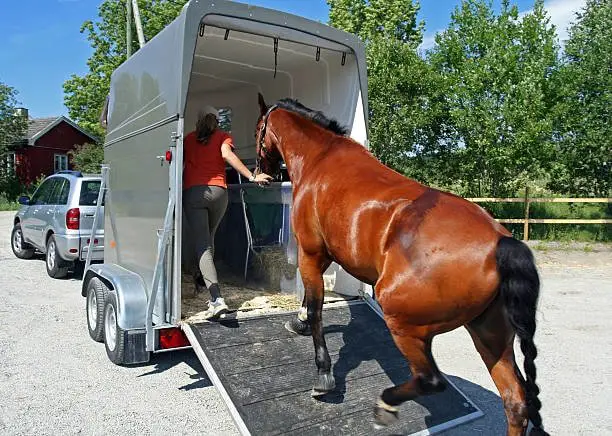
2. Leading the Horse On
Horses that lead readily should load easily if a few common-sense rules are followed. Choose the loading area carefully- try to load from the flat ground or, even better, have the wheels of the float set in a small depression so that the angle of the ramp is as low as possible. Make sure the area is clear. People often load horses just in front of an obstacle. This is asking for trouble and injury if the horse rushes out backward.
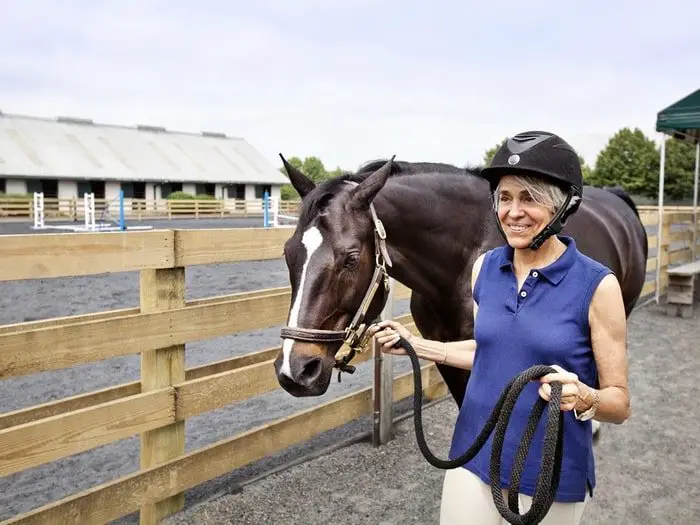
3. Horse Transport: Problem Leaders
Many horses, through fear or malice, simply refuse to load. There are several methods of loading which are tried and true, and which will work for most horses-these are discussed under “handling difficult horses”. Administration of oral or injectable sedatives half an hour before travel may overcome the anxieties of problem horses. Contact your veterinary surgeon for advice.
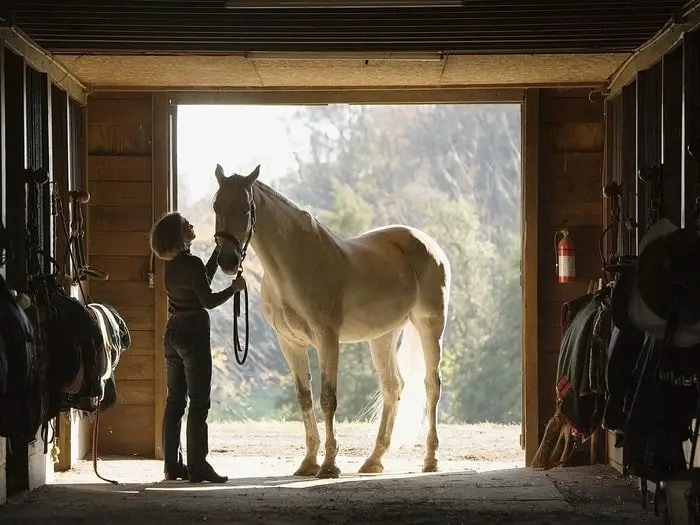
4. Tying the Head of Horse
With fractious horses, it is dangerous to tie the head in position before the tailgate is raised. Make sure the attendant raising the tailgate stands to the side rather than directly behind the gate. Young or nervous horses can be safely tied in a rope halter. It is important that horses be tied up short enough that they cannot interfere with each other but long enough to allow head movement to retain balance.
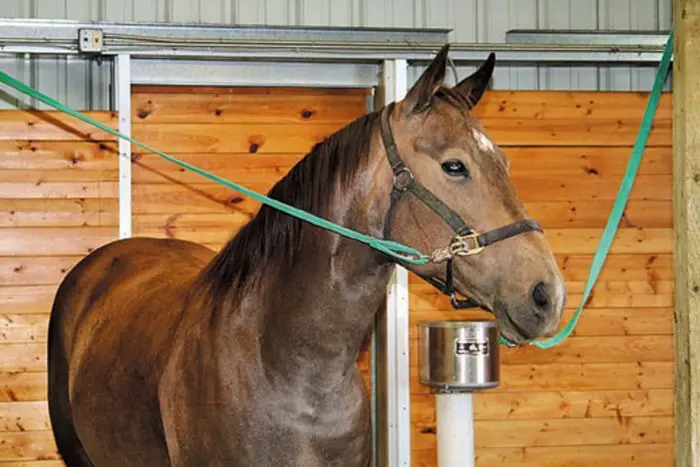
5. Unloading the Horse
Always untie the horse before undoing the tailgate. Once the tailgate down allows the horse to slowly back out. Never pull hard on the lead rope if a horse is backing out. This can lead to serious injury or even death of the horse if it throws its head upwards and catches the roof of the float.
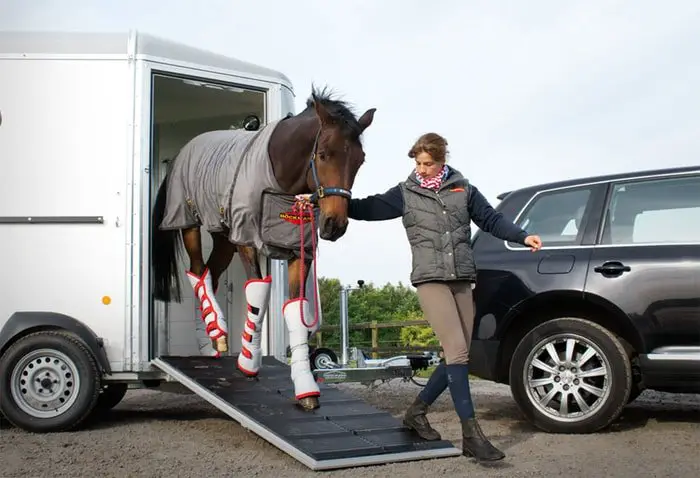
6. Horse Transport: Hints on Making Horses Safe and Comfortable
Following hints or point you must remember while horse boarding:
- Tie foals forward
- Always protect the horse’s legs
- Apply a tail bandage
- Tie hay nets, top, and bottom
- Don’t transport pregnant mares
7. Transporting Horses Safely
Driving techniques can have a lot to do with determining whether a trip is good or bad for a horse. And it is your responsibility as the driver to ensure that the horse has a good trip. Its safety, your safety, and the safety of other road users depend on careful, competent driving. Before you even consider transporting a horse in afloat yourself, practice all the float-towing driving maneuvers and make any adjustments to the tow vehicle/float combination you think necessary for safety and comfort.
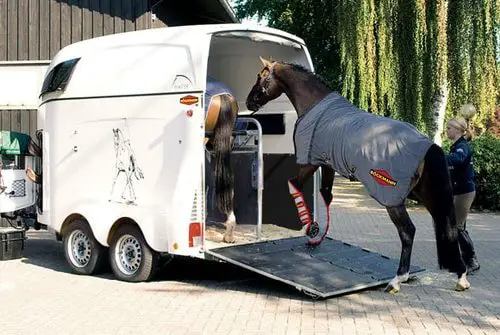
8. Horse Transport: Towing an Empty Float
When unladen, the float is a great deal lighter and, depending on the road surface, can be jarred severely. Over the long term, such jarring can cause breakages and fatigue in construction materials. It could be worth considering lowering the tire pressure if you are undertaking long distances unladen.
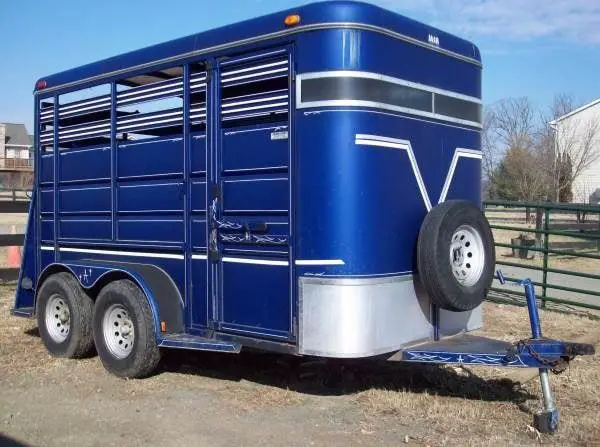
9. Handling Poor Travelers of Horse
Some horses once loaded panic as soon as the float starts to move. There are no set rules as to why some horses travel well and others panic. Some horses like to look out the front window, it helps them to get their bearings. Others, however, find looking out the window frightening.some will even lie down if they don’t get to stand on the side they like.
It’s not hard to work out why some horses feel unsafe when being floated. Try getting down on your hands and knees in your float while someone tows it up the driveway. You will find that your first reaction is to spread your arms and legs to cope with the sideways movements of the float. If you keep your arms and legs vertical, you start to sway. The driver applying the brakes will cause you to lurch forward. It is all very unpleasant.
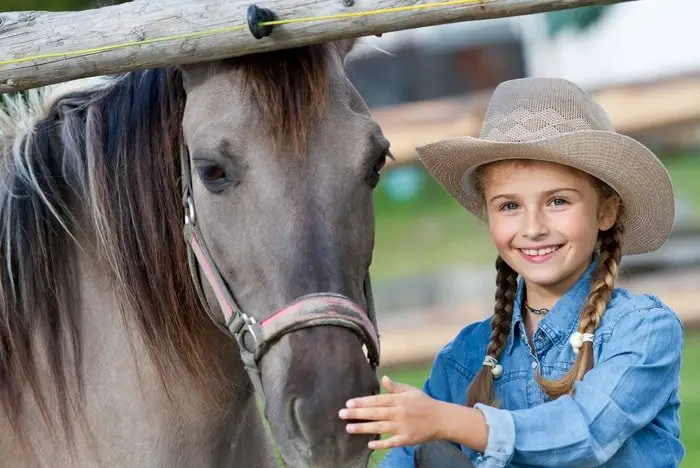
Should an extended journey be needed, a truck, rather than afloat, can allow a greater area for a bad traveler to stand in, without experiencing the sometimes claustrophobic confines of a small float.
10. Extra Care for the First Time During Horse Boarding
If buying a new horse, try to find out if it has any known traveling problems, so that its capabilities are known before loading up and heading for home. The horse may never forgive you for any injuries or indignities suffered on that first trip.
11. Horse Transport: What To Do If Things Go Wrong
If things go wrong, you’ll certainly know about it. Crashing and banging noises coming from inside a horse float to create a sick feeling in the hearts of all occupants of the car towing it. Just remember that while afloat will rock and sway when the horse inside it becomes upset, it is safe and will not tip over.
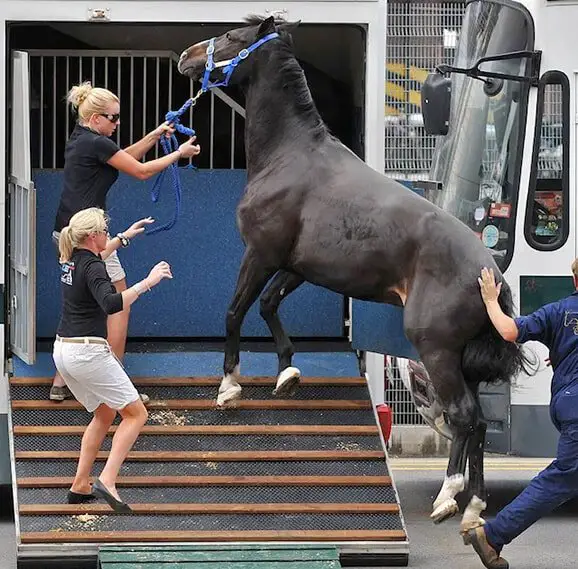
12. Travel Sickness in Horses
Traveling has become a way of life for many of today’s top competition horses. As horse travel has increased, so too has the occurrence of travel sickness in horses transported long distances. Horses can be affected by a variety of disorders after traveling including dehydration, laminitis, and diarrhea. The major problem, however, is pleuropneumonia, an often fatal illness.
Horses floated for only a few hours are not prone to these conditions, but when journeys exceed 12 hours, there is an increased risk unless preventative measures are taken before and during the trip. Forms of Travel Sickness are:
A. Dehydration in Horse
Severe dehydration may occur in horses that have sweated profusely during a race or a competition, then been loaded onto a float without sufficient time for recovery, and sweated again because of the stress of the travel. Sweating during the journey may not be noticed as it dries on the horse’s coat.
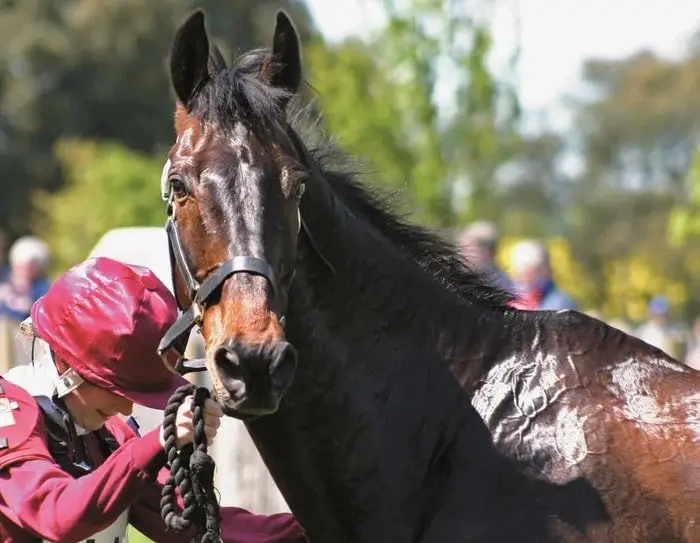
B. Laminitis in Horses
Horses with laminitis are reluctant to move, take short shuffling steps and have hot painful hooves. If only the front feet are involved, they will be placed well in front of the horse while the rear legs are placed under the horse’s body.
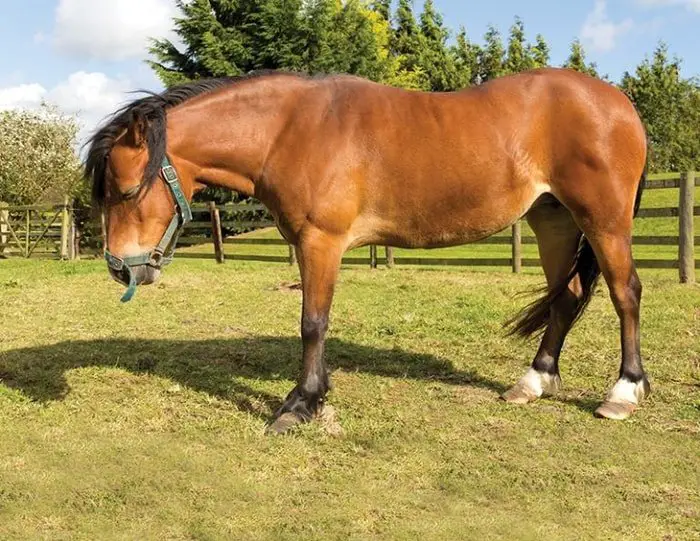
C. Diarrhea in Horses
Stress-induced diarrhea is a well-recognized and potentially fatal condition. After travel horses can be affected with severe watery to life-threatening projectile diarrhea. The factors involved in the onset of these conditions revolve around the stress of travel.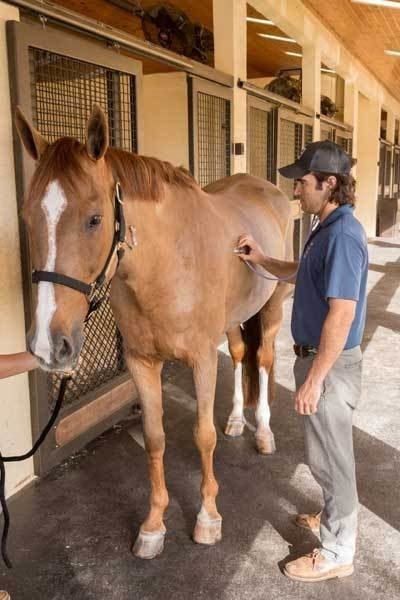
D. Pleuropneumonia in Horses
Early recognition of pleuropneumonia and prompt therapy are vital for successful treatment. Horses with developing pleuropneumonia are usually depressed, reluctant to move, go off their feed, have rapid but shallow respiration and a fever.
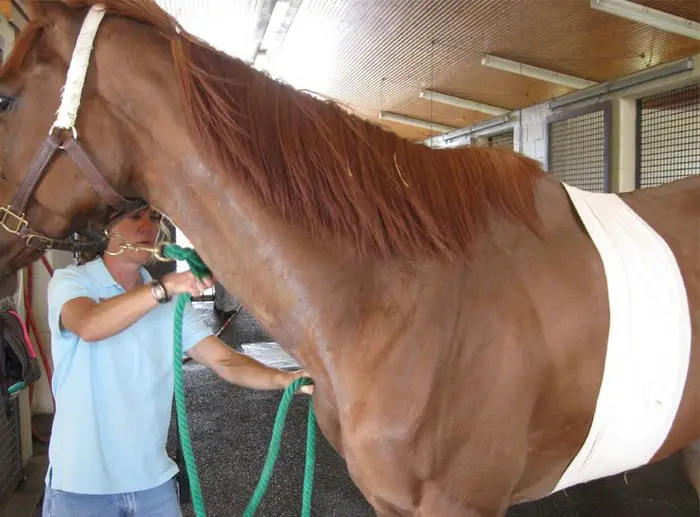
13. Preventing Horse Travel Sickness
Poor float ventilation, placement of hay so that the horse is breathing dust from the hay, excessive road dust, tying the horse short to its head is held up, poor float hygiene and being placed next to a horse with a respiratory infection are all thought to be important in predisposing to pleuropneumonia and other travel sicknesses.
As treatment is difficult and expensive in most travel sickness cases, prevention and risk reduction becomes vital. While this is not a preventable disease its incidence can be reduced by good management.
- Check your horse’s health before traveling.
- Ensure good hygiene.
- Provide an absorbent floor covering.
- Allow horses to cool down after exercise before loading.
- Placement of horses.
- Tether horses so they can lower their heads.
- Use dust-free feed.
- Drive carefully horse float.
- Adequate ventilation a must.
- Plan for changes in temperature.
- Give the horse a break.
- Provide water and hay every six to eight hours.
- Provide overnight rest periods when appropriate.
- Avoid unnecessary medication.
- Take care during the administration of laxatives.
- Check health status after arrival.
14. Horse Transport: The Horse Float
The first thing you have to make sure of is the suitability of the vehicle or float being used. Care must be taken to be sure that the physical dimensions of the float are large enough to accommodate the horse.
15. The Horse Float Design and Maintenance
There are many ready-made horse floats on the market. some may be suitable while others may not. consider the following points when choosing a horse float.
A. Size of Horse Float
This depends on how many horses have to be transported. however, remember that:
- Single horse floats can be easily towed by most cars, but many horses are hard to load into such an enclosed area
- Powerful cars are needed to tow double and triple horse floats safely
- Triple horse floats do not carry three full-sized horses.
B. Safety Features of Horse Float
These safety features are often included in floats but you may have to ask for some alterations or changes. There are a number of things to look for.
- An easily-removable chest bar.
- A non-slip ramp.
- A safety chain or bar.
- Tandem wheels.
- Side padding.
- A padded central partition.
- A central head partition.
- No projections.
- A solid close-boarded floor.
- Removable rubber matting.
- A cover for the rear opening.
- Adequate brakes.
- Ventilation.
- Light.
16. Maintenance and Safety of Horse Floats
It’s an unfortunate reality that valuable horses are often loaded into unsafe floats that have been poorly maintained and serviced. This section is designed to help those who want to provide their horses with safe transport but who have very little mechanical knowledge and the minimum of tools.
A. Safety Precautions During Loading in Horse Float
- Hitching heights-Matching the hitch heights of the towing vehicle and trailer is most important for the safe handling of the vehicle and for the comfort hitching and the problems that result.
- Tow bars-Tow bars should be of the type recommended by the manufacturer of the vehicle. some of the poorer quality and home-made types have been known to break away from attaching points.
- Brakes- it is necessary that all floats be fitted with brakes. over-ride brakes actuate after the towing vehicle’s brakes are applied. this operates by having a spring-loaded hitch point on the float connected to the brakes, either hydraulically or mechanically.
- Lights-Floats should have clearance lights high on the front of the float, plus stop, tail and number plate lights on the rear. check light globes and wire connections after hitching each time the float is attached.
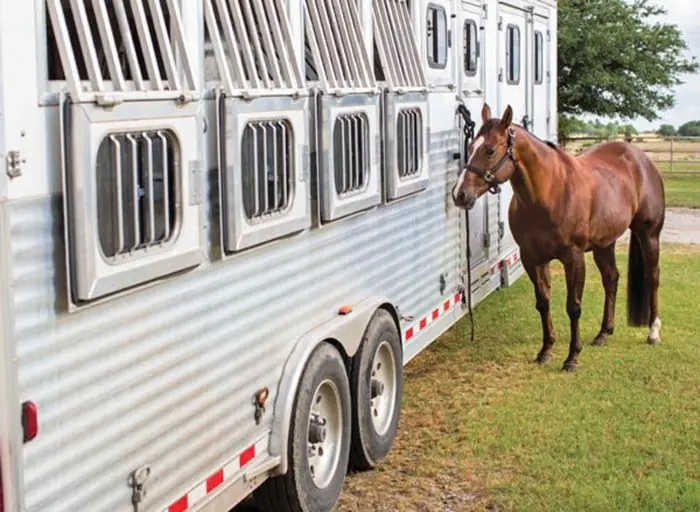
B. Maintenance of Horse Float
- Wheels and Tyres– Wheels bearing on floats should be re-packed with lubricant at least yearly.
- Wheel Bearing Adjustment-Tighten the hub retaining nut until the wheel drags slightly when rotated. turning the wheel also seats the bearing.
- Springs and Shackles-Check for lubrication points on spring shackles, though most floats are now fitted with nylon bushes that need no lubrication.
- Tires on Floats-As most floats are used only occasionally, it is wise to check tire pressures before every trip
Final Advice on Horse Transport
Horse transport is a frequent activity that is performed by the horse owner. You must follow the above points or advice during horse transport. Many small injuries and difficulties may arise due to the faulty handling of horses during transportation. In this discussion you will get a proper guideline on horse transport. You must share the information with your friends, horse owners, transport technicians, and horse lovers.